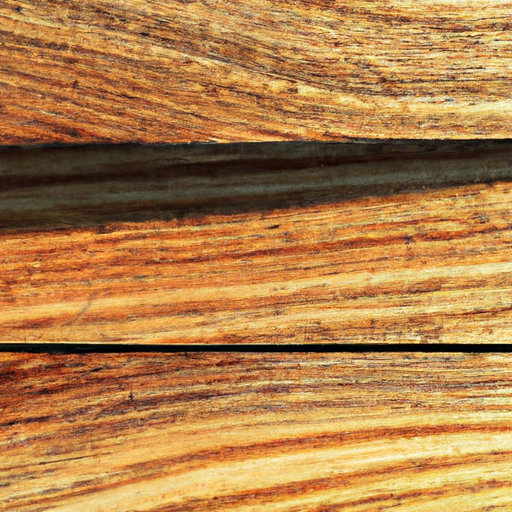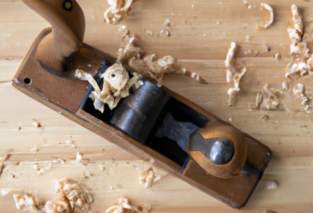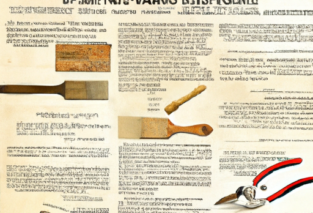In this article, we will explore the key factors you should consider when selecting the perfect wood for your project. You’ll learn about the various types of wood available, their properties, and how they can impact the outcome of your project. By the end, you’ll have a clearer understanding of the different wood options and be confident in making the right choice for your next woodworking endeavor.

Understanding the Project
When starting a new woodworking project, one of the most important decisions you will make is choosing the right type of wood. With so many options available, it can be overwhelming to determine which wood species is best suited for your specific needs. However, by following a systematic approach, you can ensure that you select the perfect wood that matches both your project requirements and personal preferences.
Determining the Purpose
The first step in choosing the right type of wood for your project is to determine its purpose. Are you building a piece of furniture, constructing a wooden structure, or creating intricate wood carvings? Understanding the purpose of your project will help narrow down the selection of wood species that are best suited for your specific application.
Identifying the Project Requirements
Once you have determined the purpose of your project, it is essential to identify the specific requirements that the wood must meet. Consider factors such as durability, strength, and appearance. Are you looking for a wood that can withstand heavy use and resist wear and tear, or is aesthetics the primary concern for your project? By clearly defining your project requirements, you can narrow down the options and make an informed decision.
Researching Wood Species
Now that you have a clear understanding of the purpose and requirements of your project, it’s time to research different wood species to find the one that best meets your needs.
Exploring Popular Wood Types
There are countless wood species available, each with its own unique characteristics. Some popular wood types include oak, maple, cherry, walnut, and mahogany. Each species has its own strengths and weaknesses, which must be considered based on your project requirements. Explore the features of different wood types to get a sense of their individual properties.
Considering the Properties of Each Type
When researching wood species, take into consideration various properties such as hardness, density, and grain pattern. Hardwood species like oak and walnut are known for their strength and durability, making them suitable for furniture and structural projects. Softwood species like pine and cedar, on the other hand, may be better suited for decorative and interior projects. Additionally, consider the color and grain pattern of the wood, as this will impact the overall appearance of your project.
Matching Wood Characteristics to Project Needs
Once you have a good understanding of the different wood types and their properties, it’s time to match those characteristics to your project needs.
Considering Durability and Strength
If durability and strength are important factors for your project, consider hardwood species like oak, maple, or mahogany. These woods are known for their robustness and can withstand heavy use. On the other hand, if your project requires a wood that is easy to work with and less prone to splitting, softwood species like pine or cedar may be a better fit.
Examining Wood’s Appearance
If aesthetics are a priority for your project, consider the color, grain pattern, and texture of the wood species you are considering. Some species, like cherry or walnut, have beautiful natural colors and unique grain patterns that add character to any project. Others, like maple or oak, can be stained or painted to achieve the desired look. Take the time to examine different wood samples or look at photos online to ensure that the wood’s appearance aligns with your vision.
Understanding Woodworking Techniques
Once you have matched the wood characteristics to your project needs, it’s crucial to understand how the chosen wood will behave during the woodworking process.
Assessing the Wood’s Workability
Different wood species have varying levels of workability. Some woods, like pine or poplar, are relatively easy to work with and are suitable for beginners. Other species, like hard maple or ebony, can be more challenging to work with due to their hardness or tendency to splinter. Consider your skill level and the tools you have access to when assessing the workability of the wood.
Knowing the Wood’s Reaction to Finishes
The type of finish you plan to apply to your project is another factor to consider when choosing wood. Some woods, such as oak or mahogany, take stains and finishes exceptionally well, resulting in a beautiful, polished look. Others, like pine or maple, may require special techniques or finishes to achieve the desired appearance. Research how different wood species react to various finishes to ensure that the final product meets your expectations.

Assessing Budget Constraints
Budget is an important consideration for any woodworking project. Different wood species come with different price tags, and it’s essential to evaluate the cost factors before making a decision.
Considering Cost Factors
Exotic or imported wood species are generally more expensive than locally available options. Additionally, certain hardwoods, such as walnut or teak, are known for their higher price due to their scarcity and popularity. Consider the size of your project and the amount of wood required when calculating the budget.
Evaluating the Cost-Effectiveness for the Project
While it may be tempting to opt for the most affordable wood option, it’s important to consider long-term cost-effectiveness. Some wood species may require extra maintenance or be more prone to damage, leading to additional expenses in the future. Balancing the initial cost with the long-term durability and maintenance requirements will help ensure that you make a cost-effective decision for your project.
Evaluating Environmental Impact
As the importance of sustainability and environmental consciousness increases, it is crucial to consider the environmental impact of the wood you choose for your project.
Exploring Sustainable Wood Options
Sustainable wood options come from responsibly managed forests, ensuring that the wood is harvested in an environmentally friendly manner. Look for certifications such as the Forest Stewardship Council (FSC) or the Programme for the Endorsement of Forest Certification (PEFC) to identify sustainable wood options.
Assessing the Origins and Harvesting Methods
Research the origins and harvesting methods of the wood species you are considering. Some woods, particularly exotic species, may come from illegal logging or unsustainable practices. By choosing wood from reputable sources and suppliers, you can make a more environmentally conscious decision.
Consulting with Experts and Professionals
To gain further insight and expert advice, it is beneficial to consult with experienced woodworkers and professionals in the field.
Seeking Advice from Woodworkers
Experienced woodworkers can provide valuable recommendations based on their knowledge and expertise. They can guide you in selecting the right type of wood for your project and offer insights into the best practices for working with specific species. Seek recommendations from local woodworking communities or online forums to tap into this wealth of knowledge.
Considering Architectural Recommendations
If your project involves incorporating wood into an architectural design, it is crucial to consider the recommendations of architects or design professionals. They can provide insights into the structural requirements and aesthetic considerations that will influence your choice of wood.
Testing and Experimenting
For larger or more significant projects, it is highly recommended to conduct test projects with various wood species before committing to a particular option.
Conducting Test Projects with Various Woods
Using smaller pieces of different wood species, construct test projects that mimic the elements of your larger project. This will allow you to assess the wood’s workability, appearance, and overall suitability for your needs. Test projects will provide valuable hands-on experience to help you make an informed decision.
Analyzing the Results for Future Projects
After conducting test projects, analyze the results to understand how different wood species perform under various conditions. Keep notes on the strengths and weaknesses of each wood type, as this knowledge will be valuable for future woodworking endeavors.

Taking Safety Precautions
Lastly, it is crucial to prioritize safety when working with wood. This includes identifying wood allergies and toxicities and using proper protective equipment.
Identifying Wood Allergies and Toxicities
Some individuals may have allergies or sensitivities to certain types of wood, such as cedar or exotic species. Research potential allergens and toxicities associated with the wood species you plan to use and take appropriate precautions, such as wearing gloves or a mask, to minimize the risk.
Using Proper Protective Equipment
Woodworking can involve sharp tools and machinery. Always wear the appropriate protective equipment, such as safety glasses, ear protection, and dust masks, when working with wood to ensure your safety.
Conclusion
Choosing the right type of wood for your project is a crucial decision that requires careful consideration. By understanding the purpose and requirements of your project, researching different wood species, and evaluating various factors like durability, appearance, workability, budget, and environmental impact, you can select the perfect wood that will bring your woodworking project to life. Remember to consult with experts, conduct test projects, and prioritize safety throughout the process. With the right wood in hand, you can confidently embark on your woodworking journey and create something truly remarkable.






